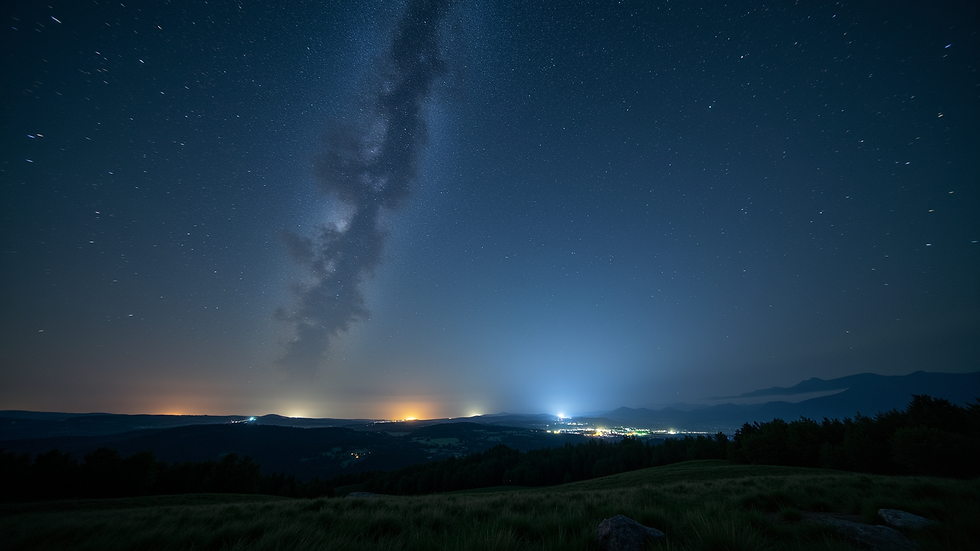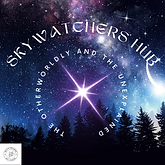Could K2-18b's Molecules Mean We're Not Alone in the Universe?
- Skywatcher's Hub

- Apr 22
- 4 min read
Updated: Apr 28

The vastness of the universe continues to surprise and inspire astronomers and dreamers alike. Among the many exoplanets discovered in recent years, one stands out: K2-18b. This intriguing planet, located in the habitable zone—or Goldilocks zone—around its host star, has shown signs of intriguing molecules in its atmosphere that could be linked to the potential for life. Specifically, the detection of dimethyl sulfide (DMS) and possibly dimethyl disulfide (DMDS) has ignited discussions about what these findings could mean for the possibility of life beyond Earth.
But what does this discovery really entail? Is it direct proof of alien life, or could there be alternative explanations? Let's explore the findings, their significance, and how they might reshape our understanding of life in the universe.
The Exciting Discovery with the James Webb Space Telescope

The James Webb Space Telescope (JWST) has revolutionized our exploration of the universe. It has provided remarkable insights into the atmospheres of distant planets, revealing their chemical compositions and hinting at conditions that could support life. K2-18b, located about 124 light-years away in the constellation Leo, is especially captivating as it's in a region where liquid water could exist—hence its title, the "Goldilocks zone."
Recent observations from JWST have unveiled signs of DMS and DMDS in K2-18b’s atmosphere. Here on Earth, marine phytoplankton are the primary producers of DMS. For example, studies show that natural DMS emissions can reach levels of about 1-10 nanomoles per liter in oceanic waters during phytoplankton blooms. The presence of such molecules on K2-18b raises the exciting possibility that similar biological processes are occurring there.
Understanding K2-18b's Molecules and Its Implications

Dimethyl sulfide (DMS) is an organic compound mainly produced by phytoplankton in Earth's oceans, where it plays a critical role in cloud formation and climate regulation. The presence of DMS in K2-18b's atmosphere could suggest biological activity similar to what we observe on our planet.
Nevertheless, while the discovery sparks hope, scientists urge caution. The detection of DMS alone does not unequivocally indicate that life exists on K2-18b. Various non-biological processes, such as volcanic activity or atmospheric reactions, could also generate DMS. Thus, we must approach these findings with a balanced view, recognizing that our assumptions about life may not apply universally.
The Role of DMDS and Its Significance
Alongside DMS, JWST's data hint at the possible presence of dimethyl disulfide (DMDS). Like DMS, DMDS is typically associated with biological processes on Earth, potentially produced by certain bacteria. The presence of DMDS adds complexity to our understanding of K2-18b’s atmospheric chemistry, as it may indicate more advanced or varied biological activity.
However, the detection of DMDS is just the beginning. Further observations are necessary to confirm its presence and determine its origin. These future studies will seek to clarify if these molecules arise from lifeforms, just as they do on Earth, or result from other chemical processes.
The Importance of Further Research

Remarkable discoveries come with the responsibility of rigorous scientific investigation. While finding DMS and DMDS is a promising step toward understanding extraterrestrial life, it underscores the need for precise frameworks to probe these intriguing findings further.
Currently, scientists are preparing for more in-depth studies and observations to validate the initial results. Research teams worldwide are collaborating to collect ample data to support or challenge the idea of biological activity on K2-18b. In 2023, it is estimated that astronomers may dedicate as many as 150 observing hours on JWST to this mission, a significant commitment to unraveling these cosmic mysteries.
As we await updates from ongoing investigations, the excitement surrounding K2-18b serves as a reminder of our relentless curiosity about the universe. The potential of discovering life beyond Earth compels us to keep asking fundamental questions: Are we alone in the cosmos, or is life flourishing on distant worlds?
What Lies Ahead
The discovery of molecules like DMS and DMDS on K2-18b leads to thrilling inquiries about the existence of life beyond our planet. While these findings do not serve as conclusive evidence for extraterrestrial organisms, they certainly pave the way for further exploration into the atmosphere and chemical signatures of this compelling exoplanet.
As we advance technologically and telescopes like JWST gather more data, we move closer to unlocking the mysteries hidden in distant corners of our universe. Until then, we can only wonder about the astonishing discoveries waiting for us out there—a universe that may indeed be vibrant with life.
For those captivated by the cosmos, K2-18b stands as an exciting testament to our position in the universe and the vast possibilities of life silently flying through space, eager for us to unveil its secrets. Keep looking up; the cosmos holds remarkable revelations yet to come!

.png)









Comments